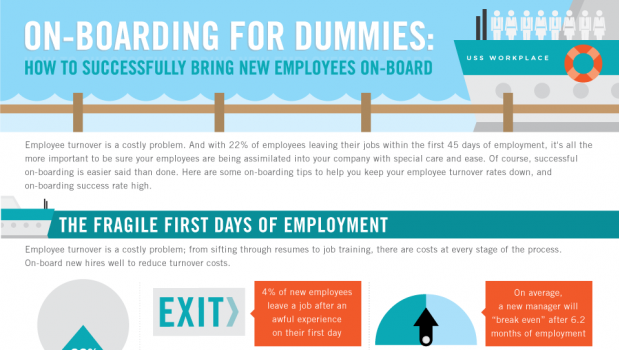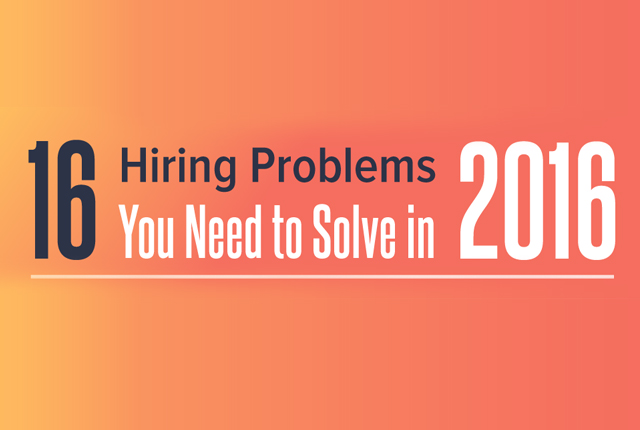One of the difficult realities of the working world is that people move around—a lot. While employee turnover may keep fresh faces in the office, it can also mean that talent moves quickly through the business and HR might feel that they are eternally stuck in the hiring process. However, employee turnover is inevitable.
This infographic from SalesChase.com (listed below) discusses employee turnover within the first few years of an employee’s tenure with a company. For most employees, this time is crucial. Just within the first few days, an employee begins to see how they might fit in with the team, whether the company lives up to their expectations, and how they might relate to their new boss. Many of their new impressions are based on their onboarding experiences, or how they’re assimilated into the company. When 22% of employees leave their new positions within 45 days of their first day, how can companies improve their onboarding so that this won’t happen? What does a successful onboarding program look like? Here are some highlights from the infographic.
Many of Dave Bui’s suggestions in this article revolve around an employee’s first few days with a company. While obviously the main purpose of any employee’s first day is to begin training them on the work they’ll be tackling, Bui says that it will benefit the company long-term to invest in the comfort of their first day.
His suggestions necessarily include transparency—being completely honest with the employee about the job they will be doing. When 58% of employees claim that they left their job because of a misrepresentation of their duties, being open about the particulars of the job might save a company from losing employees due to lack of clarity. This also includes being up front with standard policies so they avoid unintentionally violating one.
It may sound like a nicety, but one suggestion Bui makes is to do some of the leg work for the new employee. For example, make sure that their desk is stocked with the essentials and any particular or unique things they’ll need for their position. Take the time to introduce them to the entire team—whether or not they’ll be working with each directly—so they can feel more acclimated to the group.
Finally, Bui suggests a few ways to build time into your schedule for the new employee. While for you it may be just another day on the job, the new employee will benefit from your undivided attention. Occasional meetings to check in with them may give an outlet for stress and be a useful place to ask questions that may pop up in the first few days.
Onboarding is a process that is tough to nail down for many companies. However, the process can be improved when we have a better idea of how it can affect—positively or negatively—the early turnover of employees.
Take a look at the infographic below and tell us what you think in the comments!







